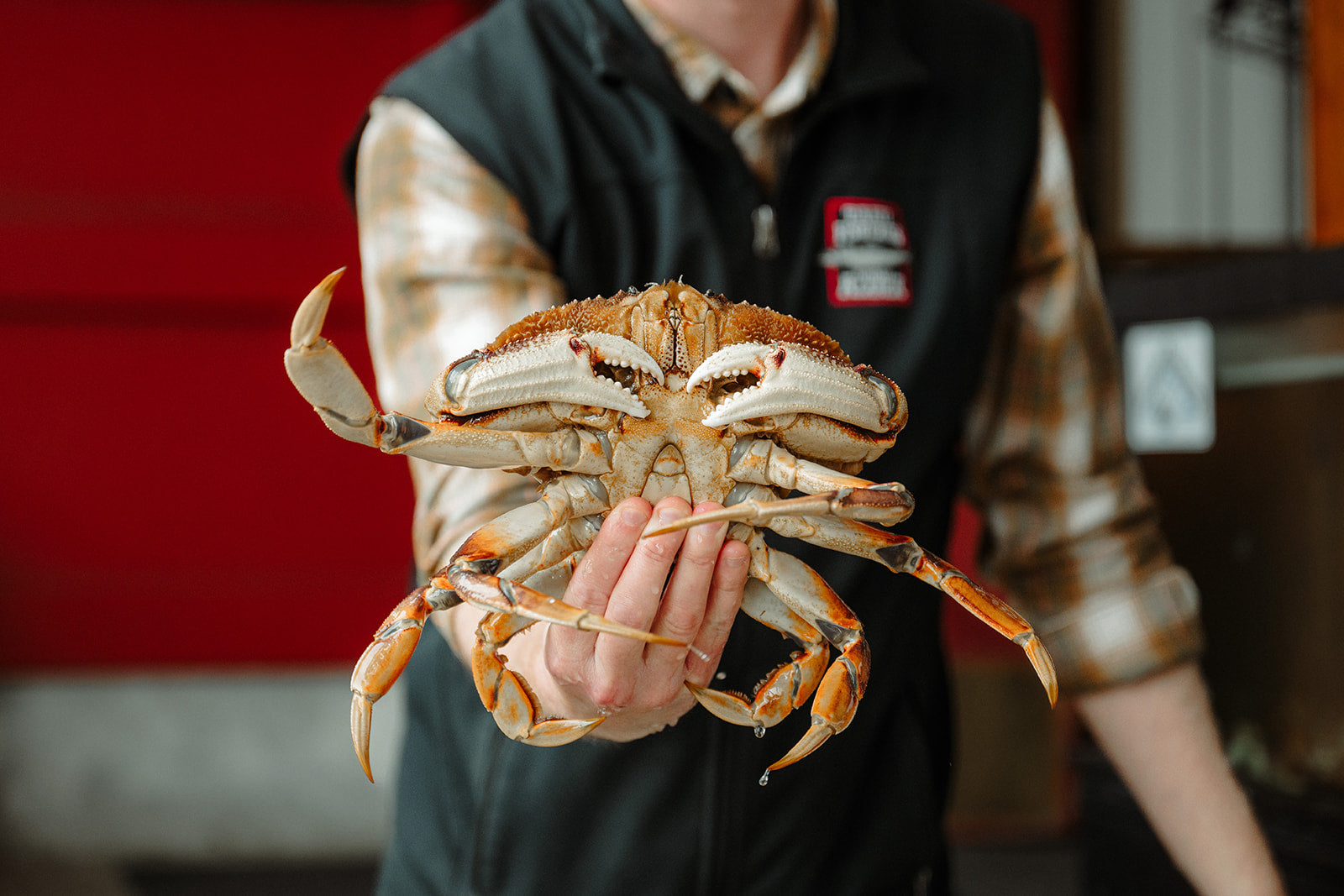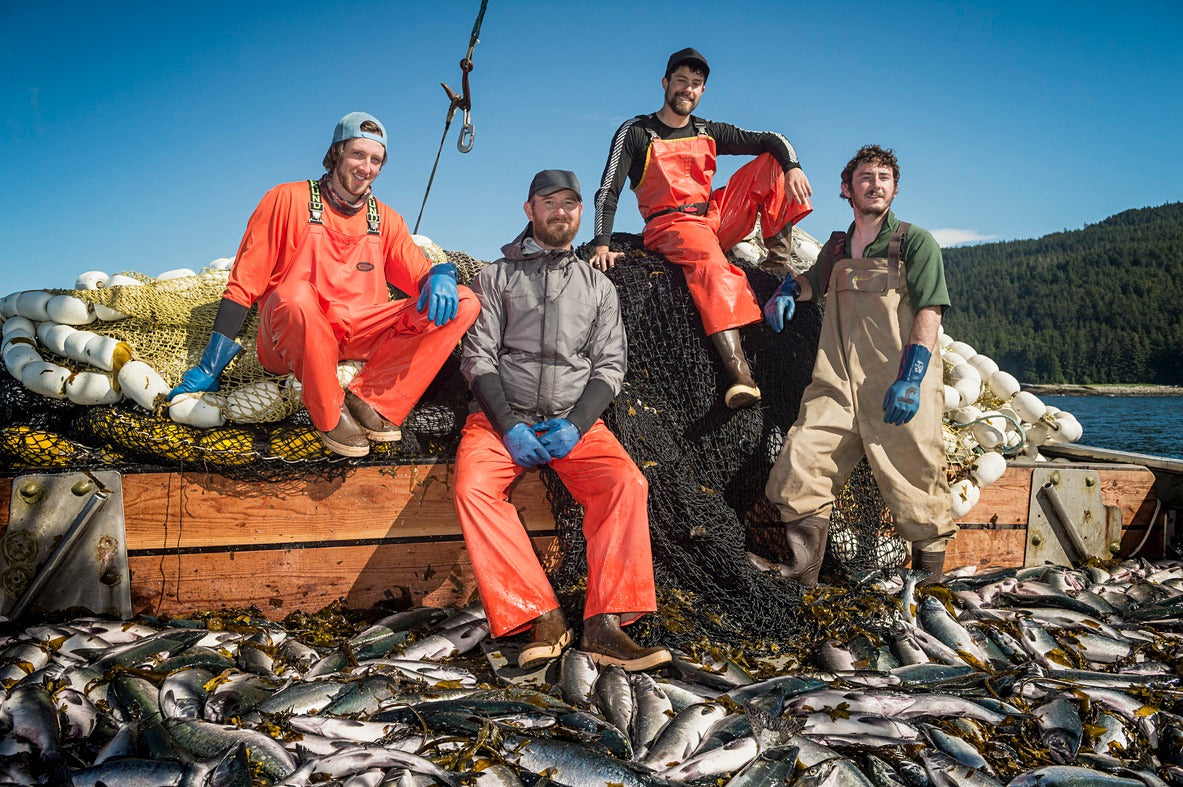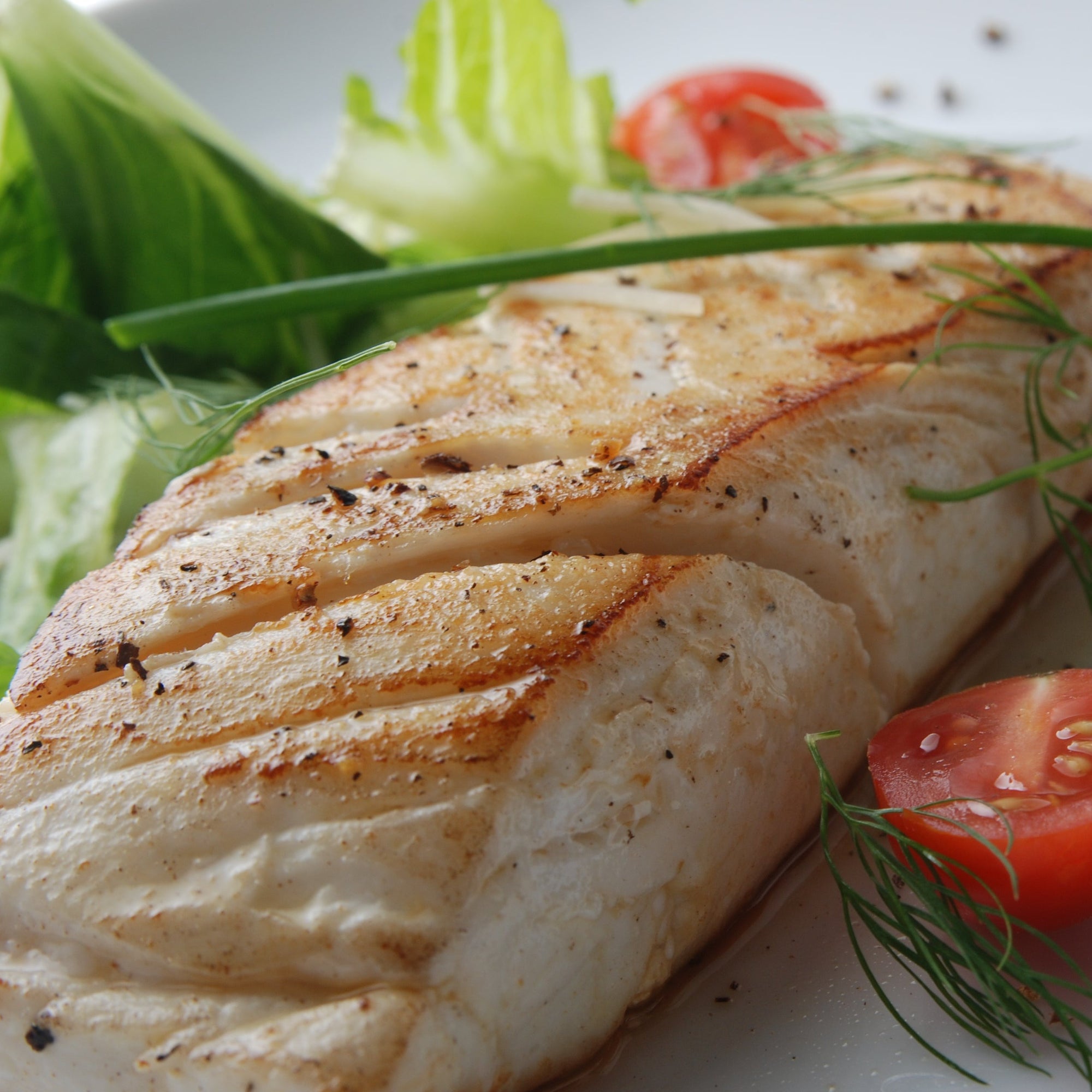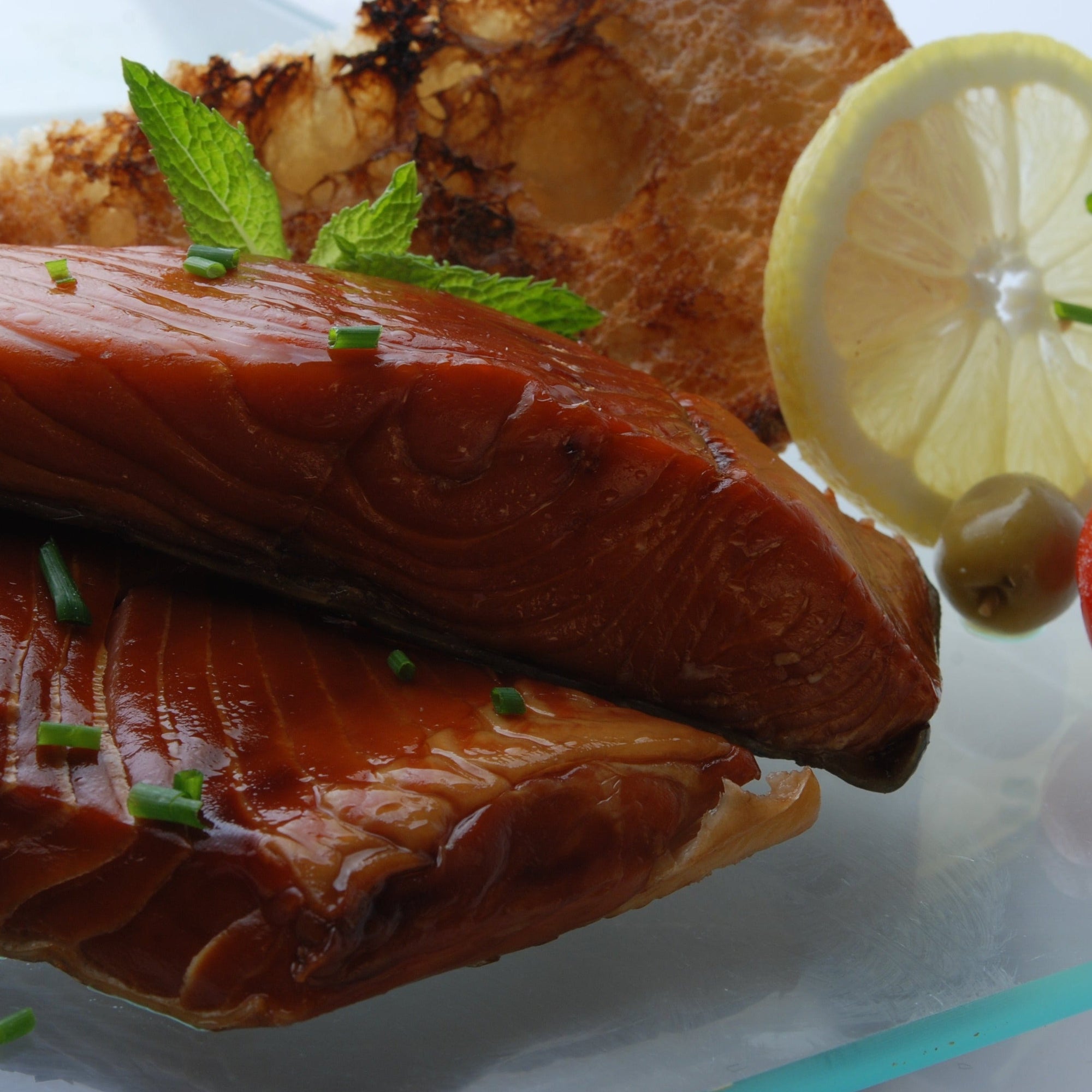Alaska’s Wild Seafood: Species by Species
This post is designed to take you deeper into the biology, seasonality, and sustainable harvest practices of the species we work with every day. Every species mentioned below is harvested under strict federal and state management plans governed by the Alaska Department of Fish and Game and NOAA Fisheries. That means:
-
Limited entry fisheries
-
Science-based quotas
-
Mandatory observer programs
-
Seasonal closures to protect spawning
-
Gear restrictions to reduce habitat impact
SALMON
Salmon are a lifeblood for Southeast Alaska’s ecosystem, economy, and culture. At Taku Fisheries, we focus on three primary species: King (Chinook), Sockeye (Red), and Coho (Silver). Each species has a different lifecycle, flavor profile, and seasonality.
King Salmon (Chinook)
-
Lifecycle: 3–7 years
-
Size: 20–40 lbs average; record sizes over 100 lbs
-
Season: May–July (peak)
-
Habitat: Deep ocean waters, long migratory routes
-
Taste: Rich, buttery, high in healthy Omega-3s
King Salmon are the largest and rarest of the Pacific salmon species. They migrate deep into Alaska’s rivers and tend to spend more years at sea, making them larger and fattier. We often catch them via trolling, a method that produces the highest grade of fish.Taku only processes premium-grade King Salmon, often sashimi-quality and flash-frozen within hours.
Sockeye Salmon (Red)
-
Lifecycle: 4–5 years
-
Size: 5–8 lbs
-
Season: June–August
-
Habitat: Nearshore coastal waters, rich estuaries
-
Taste: Deep red flesh, robust flavor, very firm
Sockeye are known for their intensely red meat and high oil content, which makes them perfect for smoking, grilling, or eating raw. Unlike other species, they often return to large lake systems, such as those in Bristol Bay or Southeast Alaska. Taku sources and processes wild Sockeye caught using sustainable net fisheries. A portion of these are selected for our Smokehouse, where they become one of our signature items.
Coho Salmon (Silver)
-
Lifecycle: 3 years
-
Size: 6–12 lbs
-
Season: July–September
-
Habitat: Coastal rivers and estuaries
-
Taste: Milder than King, still rich and flaky
Coho are favored by chefs for their balance of flavor and texture. They’re often caught later in the season and offer excellent value, especially when troll-caught. At Taku, we process Coho both fresh and smoked, and they are one of our most popular online offerings.
CRAB
The quality of Alaskan crab is the result of a careful balance between nature, science, and regulation. The crabs we work with all begin life as free-floating larvae before settling on the seafloor where they molt repeatedly to grow.
Dungeness Crab
-
Size: ~1.5–2.5 lbs
-
Habitat: Soft-bottom coastal areas, 20–200 ft depth
-
Season: Late fall through spring
-
Taste: Sweet, flaky, clean flavor
Dungeness is caught in pot fisheries just outside Juneau. Only mature males of legal size are harvested, females are released to protect breeding stock. Once offloaded, crabs are boiled live in saltwater, flash frozen, and glazed for shipment. Dungeness is prized for its sweet, tender, and flaky meat especially in the legs and body. Here are a few recommended ways to enjoy it:
-
Serve simply with melted butter and lemon for a traditional experience
-
Toss chilled crab meat onto a fresh salad with citrus, avocado, and herbs
-
Fold into crab cakes, risotto, or a seafood pasta for something richer
You can steam or reheat it gently from frozen, or thaw overnight in the fridge for cold dishes. Avoid boiling or overcooking, as the meat is already perfectly cooked during processing.
Snow Crab (Opilio)
-
Size: ~1–2 lbs
-
Habitat: Deep waters (300–600 ft), Bering Sea
-
Season: January–April
-
Taste: Delicate, slightly briny, stringy meat
Snow Crabs thrive in the cold, deep waters of the Bering Sea and Gulf of Alaska, typically at depths of 300–600 feet. They’re harvested using large-scale pot fisheries operating under some of the strictest quotas in the world to ensure sustainable population levels. While most Snow Crab is landed in Western Alaska, a select portion reaches our docks in Juneau via long-haul tenders. These tenders maintain freezing temperatures throughout the journey to preserve quality. Once received, the crabs are boiled, flash frozen, and glazed to ensure they arrive at your door just as sweet and flavorful as when they left the water.
Snow Crab is instantly recognizable by its long, slender legs and delicate, sweet meat that pulls away in soft, satisfying ribbons and is a favorite for family meals, special occasions, or indulgent seafood nights. Here are some serving ideas:
-
Crack and serve with clarified butter, lemon wedges, and a side of crusty bread
-
Add to pasta or creamy risotto for a touch of ocean richness
-
Mix into a crab salad or seafood dip for a chilled appetizer
-
Steam and serve alongside potatoes and corn for a classic seafood boil experience
To reheat, steam from frozen or gently thaw in the fridge and warm in a covered pan. Avoid re-boiling, as the meat is already perfectly cooked during the initial processing and can dry out if overdone.
King Crab Golden
-
Size: 6–10 lbs+
-
Habitat: Deep fjords and continental shelf, 600+ ft
-
Season: October–January
-
Taste: Rich, meaty, succulent
The most iconic Alaskan shellfish, King Crab are highly regulated and only fished in brief, controlled openers. Their massive size and firm texture make them a global delicacy. Taku sources only responsibly harvested King Crab, boil and process them on arrival, and pack them for direct-to-consumer sale.
WHITEFISH:
Beyond salmon and crab, Alaska’s groundfish industry provides some of the most versatile and sustainable protein in the world.
Halibut (Pacific)
-
Size: 20–150 lbs; some reach 300+
-
Habitat: Continental shelf, sandy bottoms, 100–900 ft
-
Season: March–November
-
Taste: Lean, firm, clean-tasting
Halibut are caught via longlines, a highly selective method that limits bycatch. Every halibut is brought up individually and checked for quality. At Taku, we process halibut into fillets and cheeks, all flash frozen and vacuum sealed at peak freshness.
Rockfish
-
Size: Varies widely by species (2–15 lbs)
-
Habitat: Rocky reefs, 50–900 ft
-
Season: Year-round, with quotas
-
Taste: Mild, slightly sweet, firm texture
Often caught incidentally during halibut and cod fishing, Rockfish are a diverse family of over 30 species in Alaska. These are slow-growing fish, so quotas are conservative and monitored. Their firm texture makes them perfect for tacos, fish and chips, and sautéing.
Pacific Black Cod
-
Size: 5–20 lbs
-
Habitat: Shelf waters, sand and mud bottoms
-
Season: January–April; secondary season in fall
-
Taste: Mild, flaky, perfect for frying or baking
Cod is abundant, fast-growing, and versatile. At Taku we handle cod in volume, processing it quickly to preserve flakiness and prevent the mushiness associated with low-quality frozen cod in supermarkets. Our Cod is mild in flavor, with a firm yet delicate texture that makes it incredibly approachable for cooks of all levels. How to Enjoy Pacific Cod at Home
-
Pan-seared with a crispy panko crust for classic fish and chips
-
Baked with lemon, garlic, and herbs for a light and healthy meal
-
Poached in tomato broth or coconut curry for global flavors
-
Flaked into tacos, chowders, or fish cakes for weeknight-friendly flexibility




